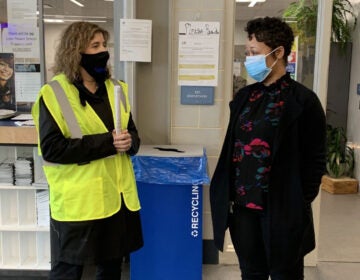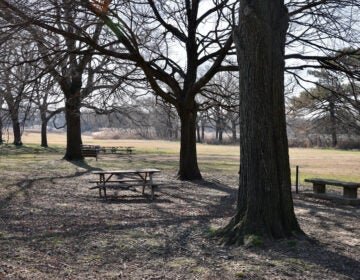The pandemic helped make FDR Park better. Now it has to survive the aftermath
If you live in South Philly, it’s not your imagination: Franklin Delano Roosevelt Park is having a moment.
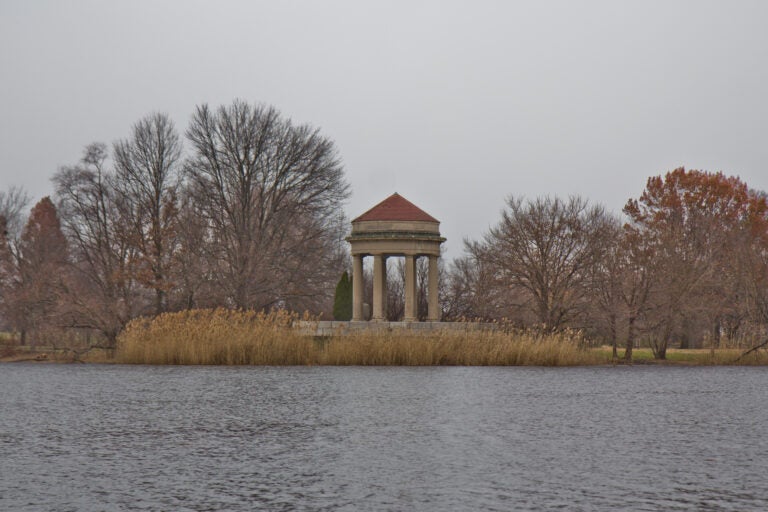
FDR Park’s iconic gazebo. (Kimberly Paynter/WHYY)
If you live in South Philly, it’s not your imagination: Franklin Delano Roosevelt Park is having a moment.
As COVID-19 restrictions pushed more residents outdoors, many urban parks saw attendance surge — and city officials say FDR hit “unprecedented” levels of use. They estimate that park trash collection, one rough measure of usage, increased by 50% since last year in a park that already saw hundreds of thousands of annual visitors by some estimates. More than 900 on-site parking spaces are now regularly maxed out on weekends, and new park volunteers have arrived by the dozens.
But volunteer Carolina Torres Toledo, a volunteer “park ambassador,” said the surge is also the fruit of a battery of deliberate and often community-driven improvements aimed at making the park more user-friendly. Most visibly, park staff and volunteers transformed a defunct 146-acre golf course into an informal network of public trails, effectively doubling the publicly accessible grounds at FDR, reigniting interest in the park along the way.
“In the last year there’s been way more volunteers,” Toledo said. “Especially since some of the new trails have been opened…It’s appealing because many people have never been there before.”
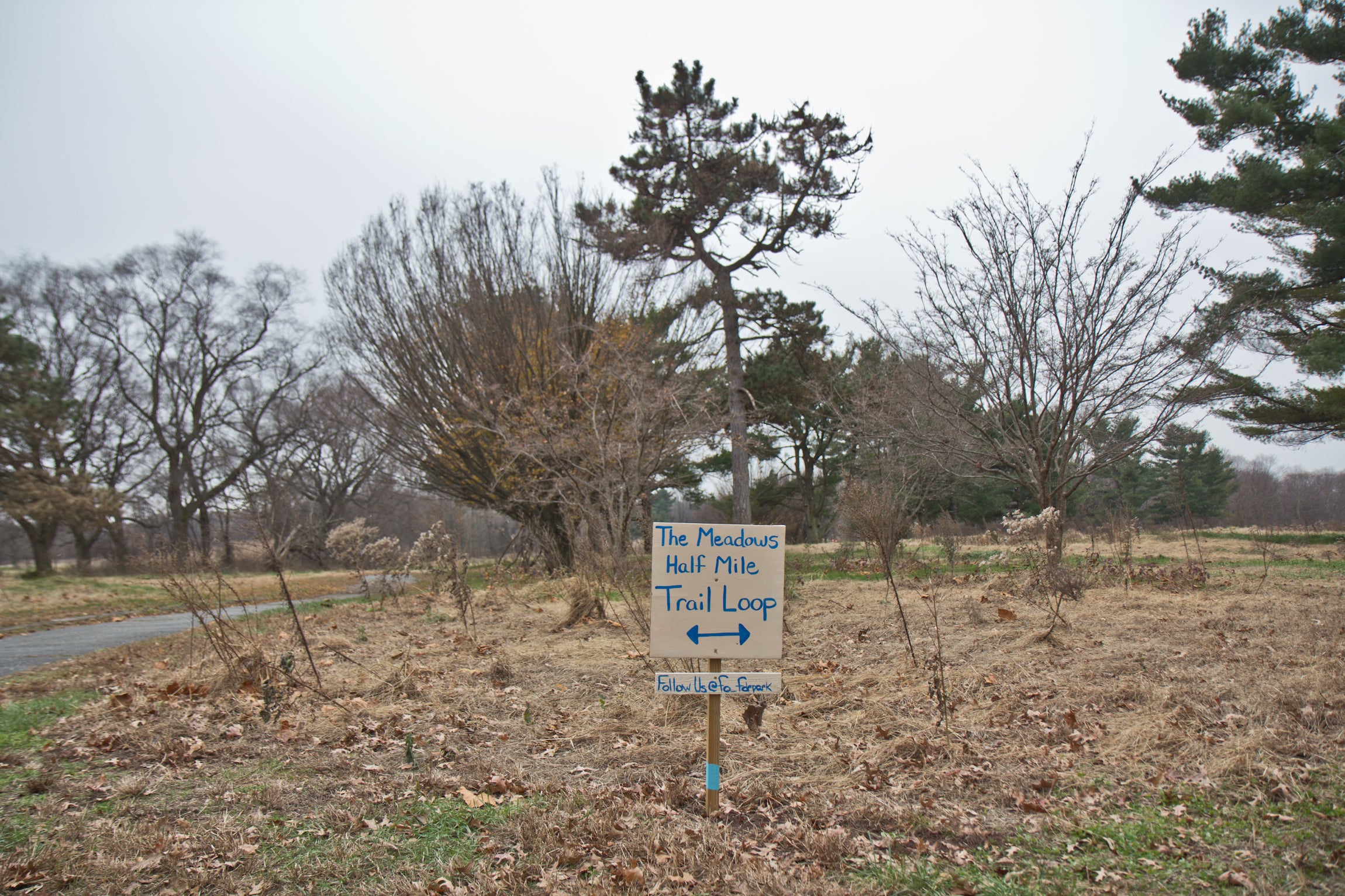
Changes at the park like this — and numerous smaller improvements — aren’t coincidental. They emerged from an experiment that could revolutionize how Philadelphia manages its showpiece parks. But they also come just as the city’s looming fiscal crisis threatens those same improvements and economic strains from the pandemic stall philanthropic donations Philadelphia increasingly depends on for major public works projects.
An ambitious $250 million 10-year master plan for FDR that was unveiled last year as a joint project of Parks & Recreation, the nonprofit Fairmount Park Conservancy and the William Penn Foundation has already had its lengthy timeline upended.
“We’re always afraid,” said Andy Toy, a board member at the Friends of FDR Park, a neighborhood-driven nonprofit support organization, of funding cuts. “And I honestly don’t know what [philanthropic groups] will support right now. The master plan might have to get broken into more, smaller pieces.”
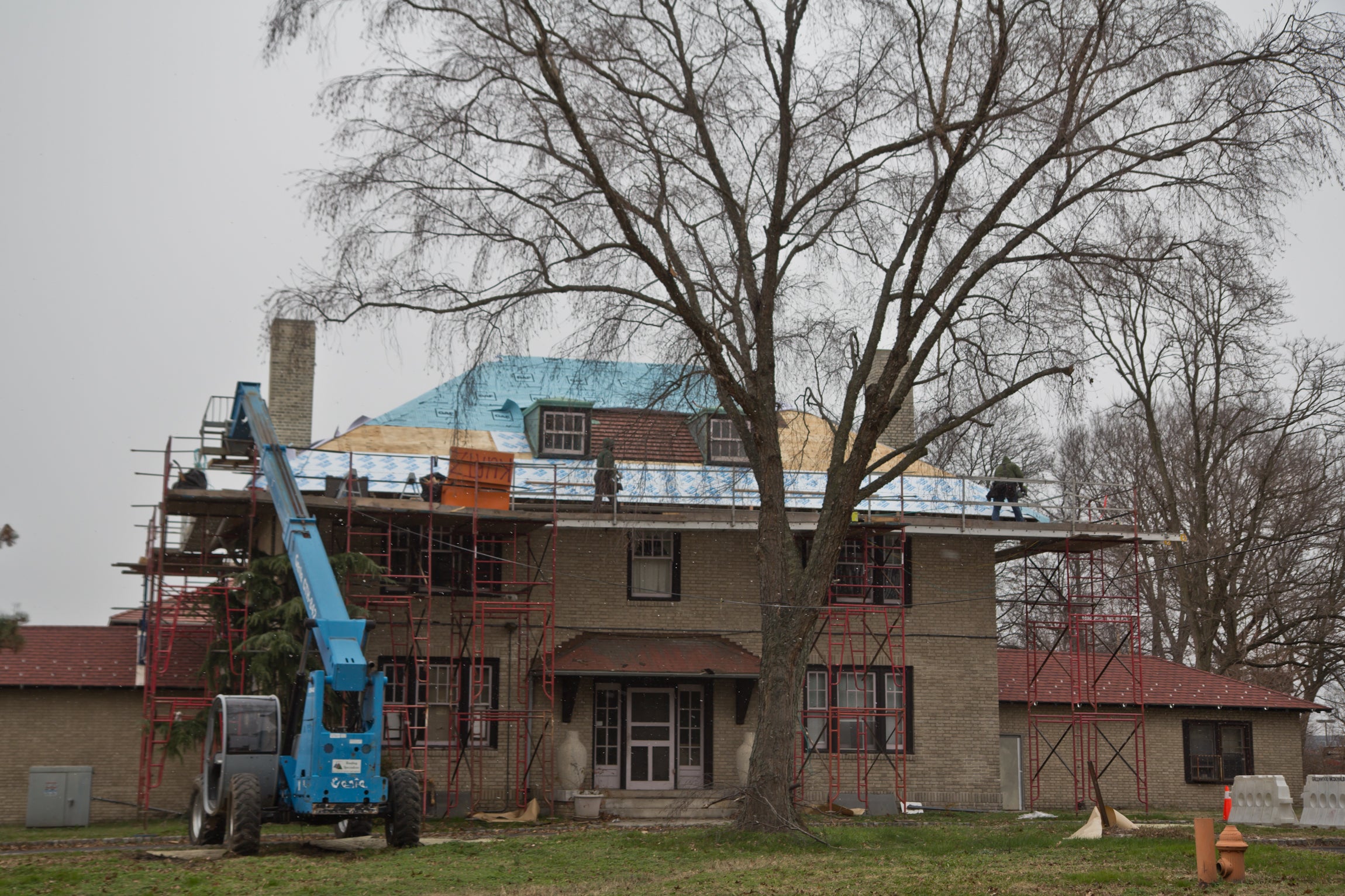
A park claimed by communities
The sprawling tract near the confluence of the Delaware and Schuylkill rivers was originally known as League Island Park and was pieced together in phases during the early to mid-20th century. Initially designed by the Olmsted Brothers, whose father’s firm also planned Central Park, the green respite was envisioned by city leaders as a means of managing the collision between South Philly’s cramped, unplanned rowhouse blocks and what was essentially estuarial bogland at the time. The solution was a landscaped park, which would be further developed during the city’s ill-fated 1926 Sesquicentennial Exhibition with a planned golf course added later, reportedly at the urging of officers at the Philadelphia Naval Shipyard.
At 348 acres, FDR is larger than both the Packer Park neighborhood it borders across Pattison Avenue to the north and the sprawling Sports Complex to the east that houses the city’s pro teams. In addition to open space, the park is also home to institutions like the American Swedish Historical Museum, ancient structures like the colonial-era Samuel Preston House, Audubon Society-designated bird-watching areas, a skate park and numerous athletic areas.
This current master plan came after a lengthy community engagement process that identified assets and big challenges in the largest green space in South Philadelphia, a dense neighborhood that is changing as new immigrants and young families flock to affordable rowhouses. Many residents both praised the park and identified it as severely neglected.
People pointed to athletic areas that felt neglected. They noted the potholes and pockmarks on the central loop road — the result of subsidence and deferred maintenance. More than half the park was still dedicated to the 1940s-era golf course, which closed in 2019 due to a lack of use and chronic flooding. Although the park is known for its Olmsted-designed boathouse and gazebo around a central lake, an entire secondary swimming pond — known as “Meadow Lake” — and two adjacent bathhouses sit largely disused and nearly invisible from some of the primary park trails due to overgrowth.
In neglect came some opportunities. Liminal space underneath Interstate 95 to the south has long been used as a DIY skatepark — an internationally-recognized and ever-changing graffiti-covered course of concrete halfpipes, hips, and bowls that are largely maintained by the skaters that use it. South Philly’s Southeast Asian and Latin American communities regularly transform other parts of the park into informal food markets on weekends.
But it was clear there had been little central guidance or support. As many opportunities as the park had captured, it had missed.
For example, Toledo, who aided in the community outreach process, said they also help coordinate games with a popular local Latin American soccer league — but the park wasn’t designed with a formal soccer area in mind. The growing league has, for years, squeezed into a patchy section of unused lawn adopted by hundreds of South Philly footballers who couldn’t find better facilities.
“It’s crazy that just across the street are multi-million dollar stadiums,” they said.
“I think FDR was forgotten about. And what’s happened is people themselves have had to make up for the lack of care from the city,” Toledo said. “It’s a really multicultural place. But it’s also a place that a lot of people don’t know…there’s a need to be more user friendly. It needs more bilingual support.”
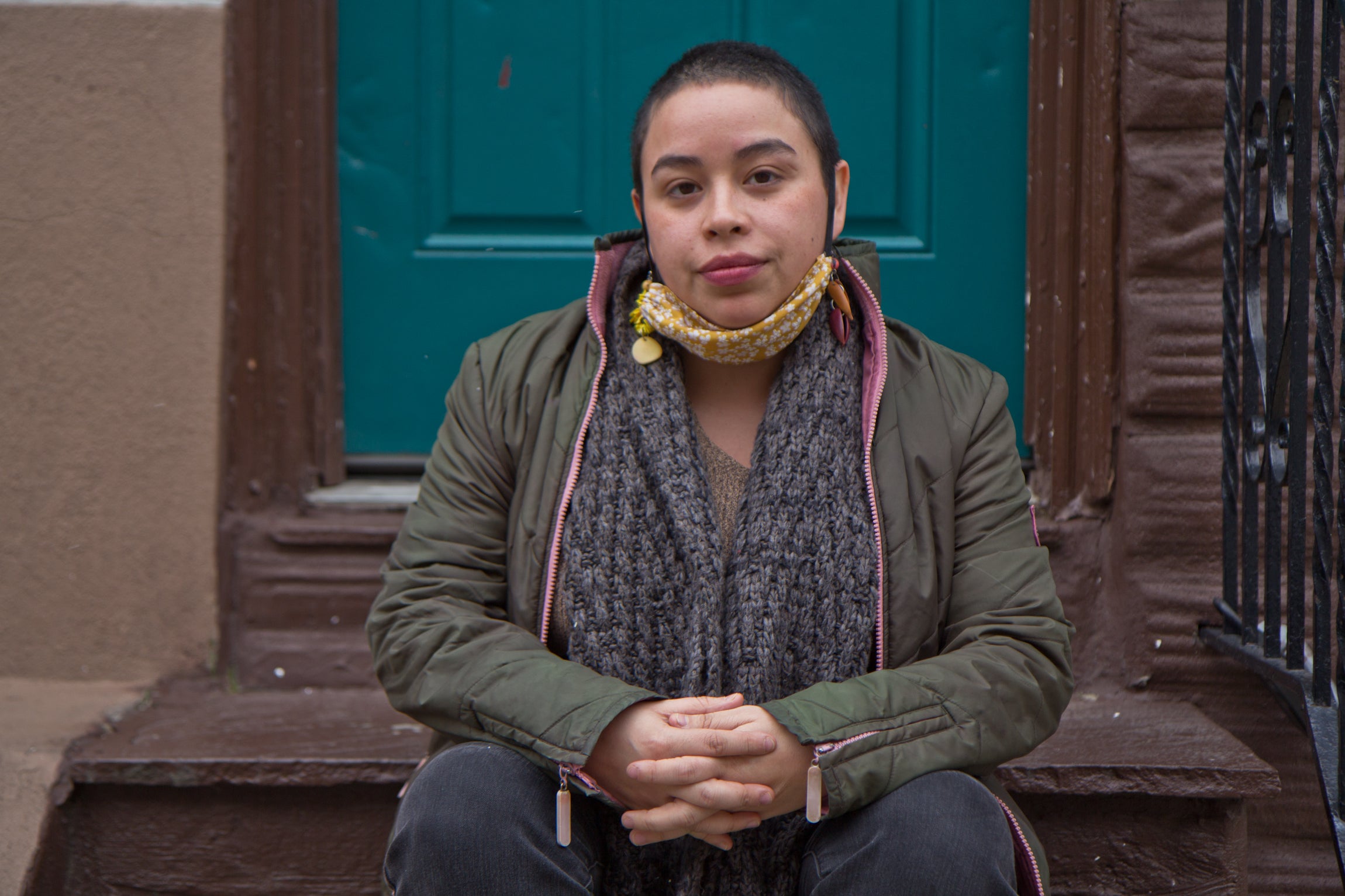
The month the pandemic struck in earnest, the city took one of its first steps toward reimagining the park, installing Justin DiBerardinis as a full-time “executive director” at FDR, a first-of-its-kind position that would oversee operations, programming and the eventual implementation of the master plan. This move brought FDR more in line with intensive park management strategies employed in places like Brooklyn’s Prospect Park, where a municipal park administrator is paired with dedicated staff and a robust “friends” group to help keep up with day-to-day needs at the park.
“Prior to the launch of the master plan, FDR was unstaffed, mostly passive parkland,” said Parks & Rec spokesperson Maita Soukup.
Soukup said the city had also made other real investments: Hiring two more support staffers in the interim and pouring money into tangible renovation projects. $750,000 went to repaving the pockmarked loop road and parking lots, striping a new bike lane in the process. The department poured a million dollars into a new roof for the historic FDR Park Welcome Center, a former stables for police mounted units. Eventually, the building is envisioned as an environmental center and offices for staffers.
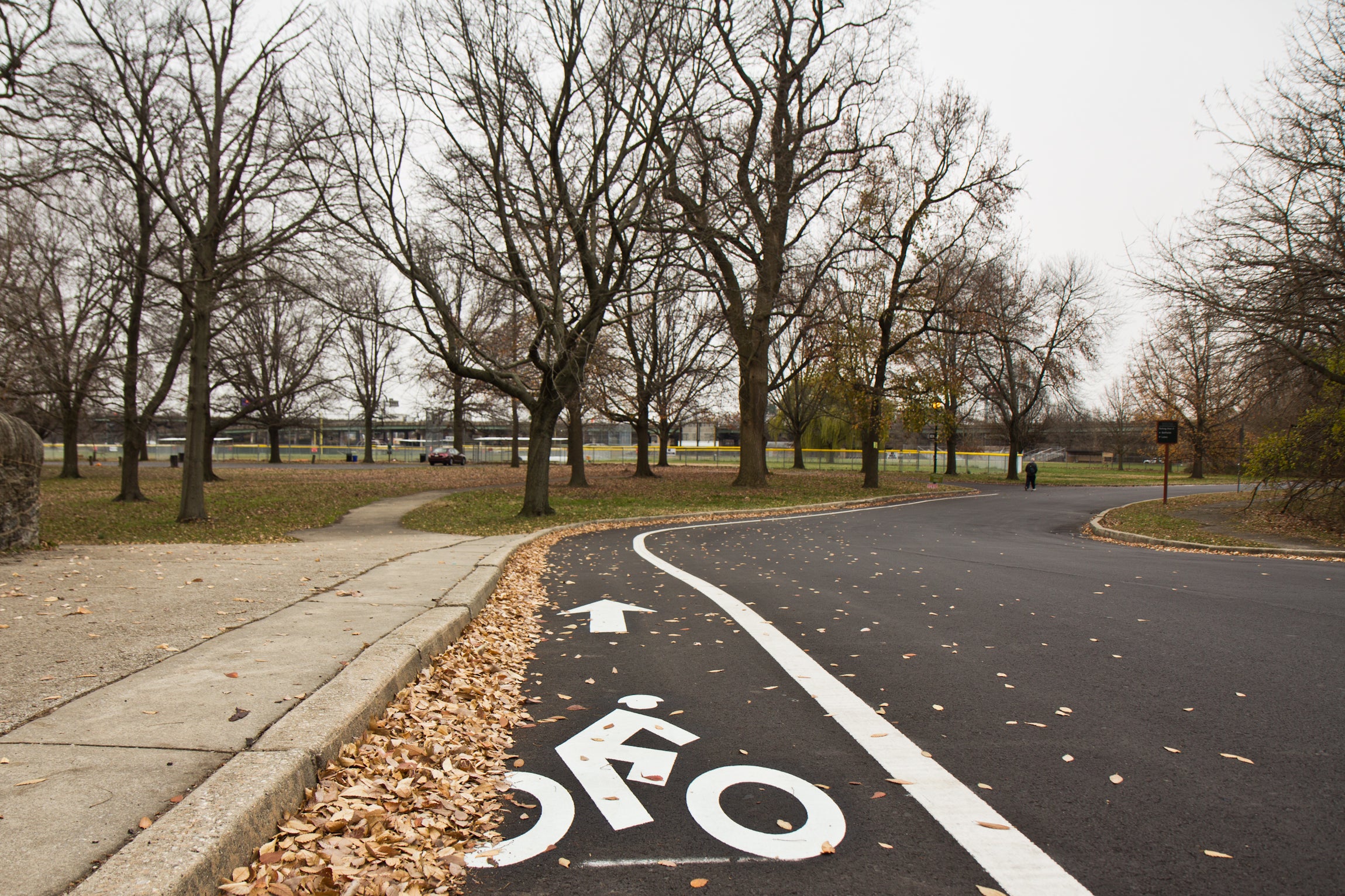
A $250,000 state planning grant, that will be matched by the Fairmount Park Conservancy, will begin the process of designing a new playground area. New trails and remediation for 40 acres of mostly inaccessible wetland near the back nine of the golf course are slated to begin, with investment from the Philadelphia International Airport, possibly as soon as next fall.
Other investments have come from the park’s growing community of superfans. In 2020, nearly a year after the golf course closed for good, park staff teamed up with volunteers to reopen the former grounds as a hiking and recreation “meadow.” Handpainted signs inform visitors the area is now dubbed “The South Philly Meadows” and the space has been key to handling the surge in visitors during the COVID era, Toy said.
“I personally didn’t even know about the golf course. I’d never used it,” he explained. “I didn’t realize how large it was.”
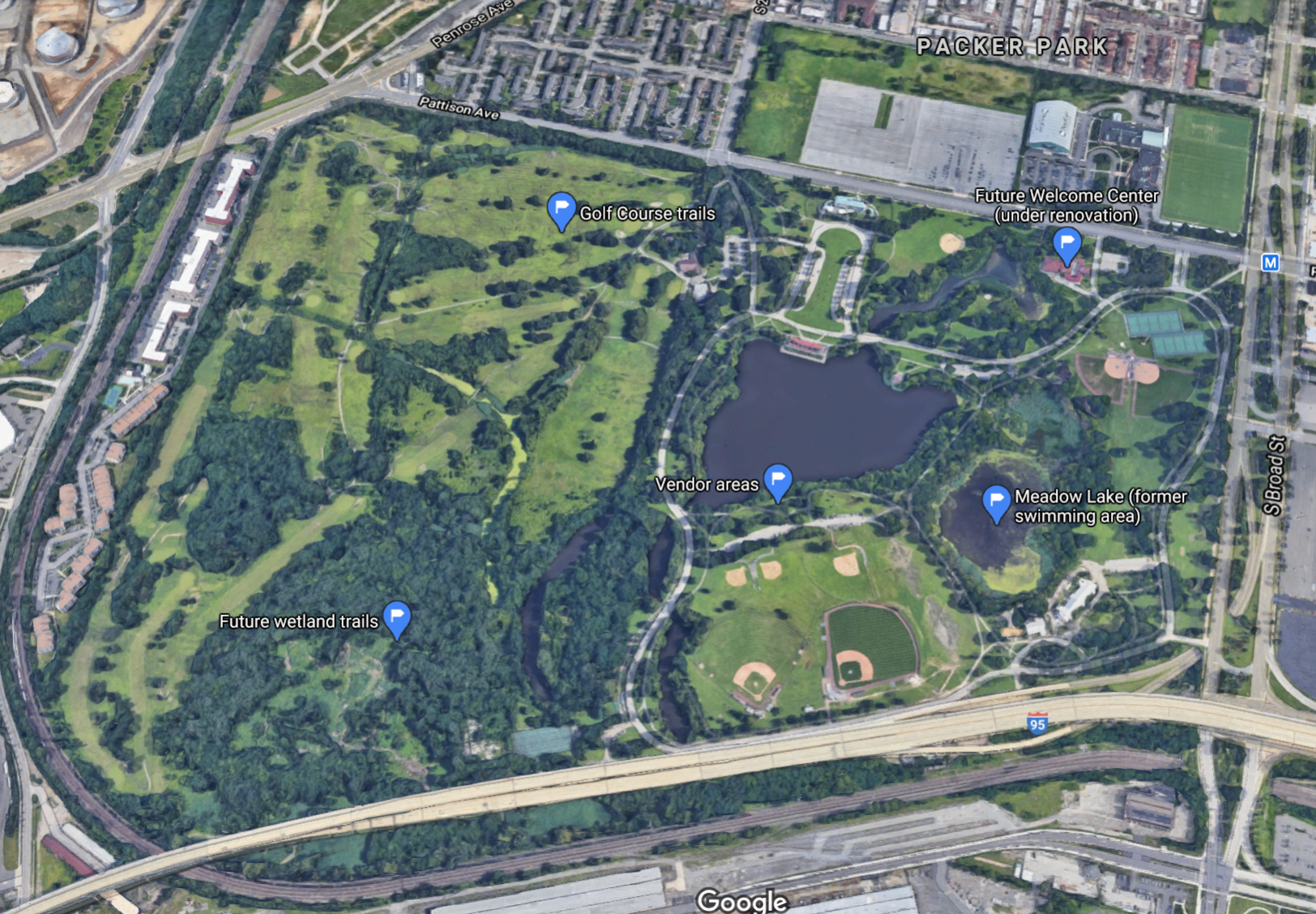
New opportunities amid obstacles
Toledo said park staff was still working on other low-hanging initiatives, like clearing out more underbrush and mulching new trails. In decades past, the city sometimes tried to force out Latino and Southeast Asian food vendors that have long sold snacks in the park. Now there is an effort to make them a more welcome and formalized presence — encouraging the formation of a merchants’ group and formalizing a system for trash disposal, for example.
“There is an understanding that diversity is a really great asset to the park and people doing a lot of different things add a lot of value,” Toy said. “And there is an understanding that there are ways it could be managed better over time, starting with understanding that there’s an asset here.”
Programming is another component to draw even more users: This year saw a Parks On Tap beer garden operate throughout the summer, and the Philadelphia Horticulture Society announced this week that it would, for the first time ever, host the city’s historic flower show outdoors at FDR Park next year. These events can also generate revenues for the park.
But other basic physical improvements are obviously missing. The golf course conversion has proven popular, but there is little in the way of formal signage to indicate to visitors the trails are behind a former pro shop building that doubles as staff offices. Many areas are still overgrown.
This is part of what the long-range plan was meant to address. But Parks & Rec director Kathryn Ott Lovell acknowledged that the original 10-year master plan — which called for transformational changes, like the formation of a 36-foot-tall hill to give users views of the city skyline — also faced new obstacles.
“The pandemic has meant that the first year of implementation looked a bit different,” Ott Lovell said. “We remain confident that the ambitious vision we shared last spring will deliver the balance of nature, access to water, and play and recreation necessary to reimagine this historic Olmsted-designed park for a new century.”
But after the department weathered a $12.5 million slash to its $66 million budget earlier this year, officials were forced to reallocate capital funding budgeted for the first year of the master plan. With the city facing an economic crisis and still accruing pandemic-related revenue deficits, Soukup now refers to the plan as a “multi-decade” vision for improvements.
Still, park officials say they are committed to the staffing model at FDR. Whether it becomes an exception or the rule at other major city parks is still unclear as the city heads into what many expect to be an even more bruising 2021.
Supporting a major park has been a learning experience for Toy. He and others say that while the volunteers and donations that have flooded in FDR are a good thing, there are limits to how much pro-bono workers and charity can do to keep public spaces functional. Financial support can be unpredictable: The park and Friends group saw a big uptick in private donations during the pandemic but then lost out lucrative revenue made from selling off parking during game days at the nearby stadiums — an impossibility now that crowds aren’t allowed at the stadiums.
Toy related an anecdote about his work through the Southeast Asian Mutual Assistance Associations Coalition to improve Mifflin Square, a smaller park in South Philly. After losing a city maintenance worker, volunteers picked up some day-to-day repair duties.
“That was something that the friends’ group could pick up,” he said. “But I don’t think you could do that at FDR.”
At the same time, others wonder if the informal changes that have occurred in the absence of more institutional funding will be complementary if the master plan does eventually unfold. One portion of the popular golf-course-turned-meadow, for example, is flagged for hundreds of new parking spots, a concession stand and playground.
Soukup said the long-term improvements would still result in a net increase in usable space and trails.
“We are encouraged by the popularity of the temporary meadowland and trail space,” she said. “Residents enjoying the western part of the park today will be glad to learn that the Master Plan will expand FDR’s meadowland by 36% from its previous state.”
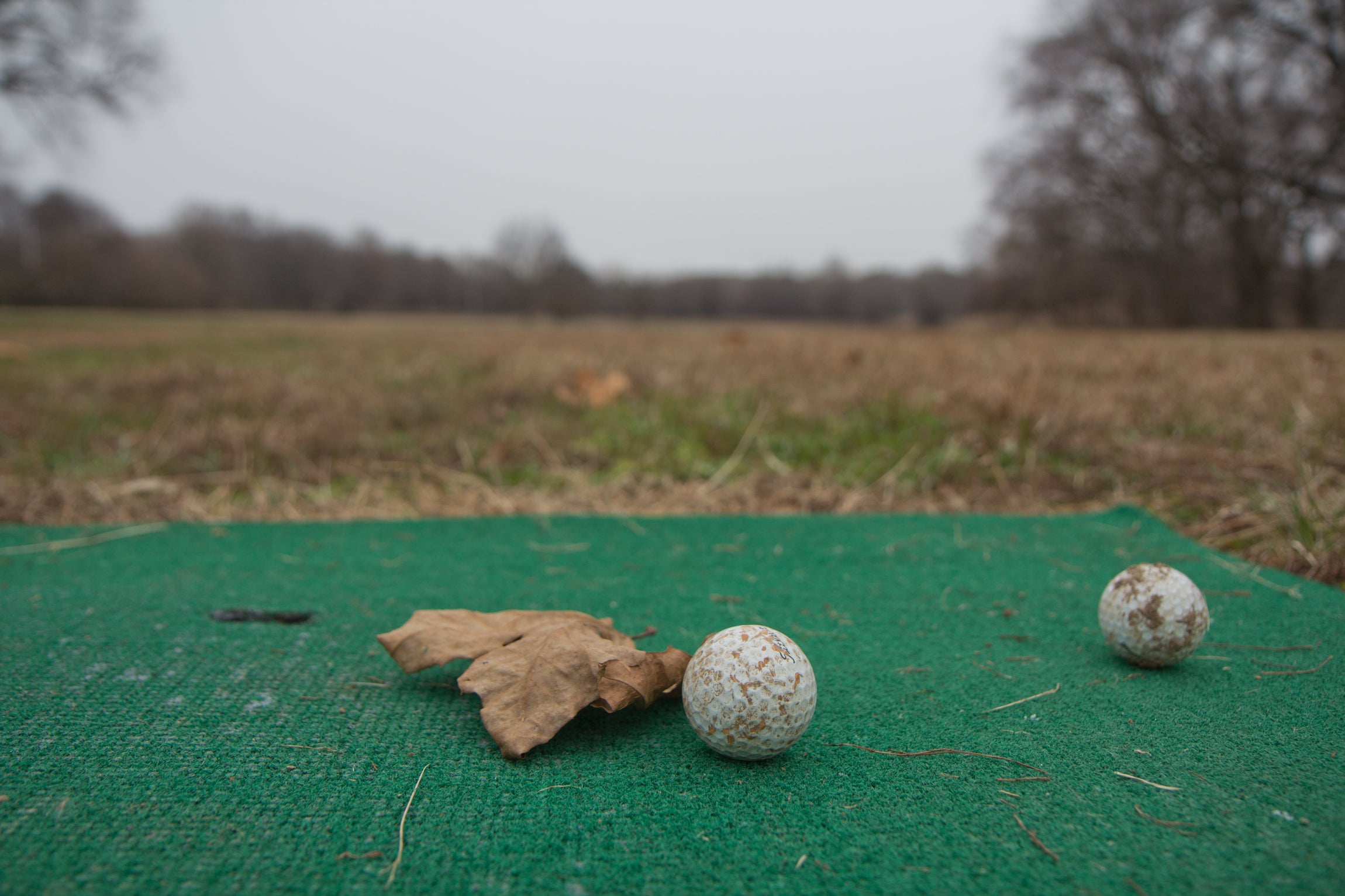
Toledo said they were hopeful the park would continue to change for the better, but also hoped improvements would respect what made the park attractive already.
There are so many communities that share the park. Southeast Asian people, Latino people, the skaters. It’s a lot of people who work together really well right now, which is really beautiful,” they said. “I hope we can keep that together as we move forwards.”

Get daily updates from WHYY News!
WHYY is your source for fact-based, in-depth journalism and information. As a nonprofit organization, we rely on financial support from readers like you. Please give today.



